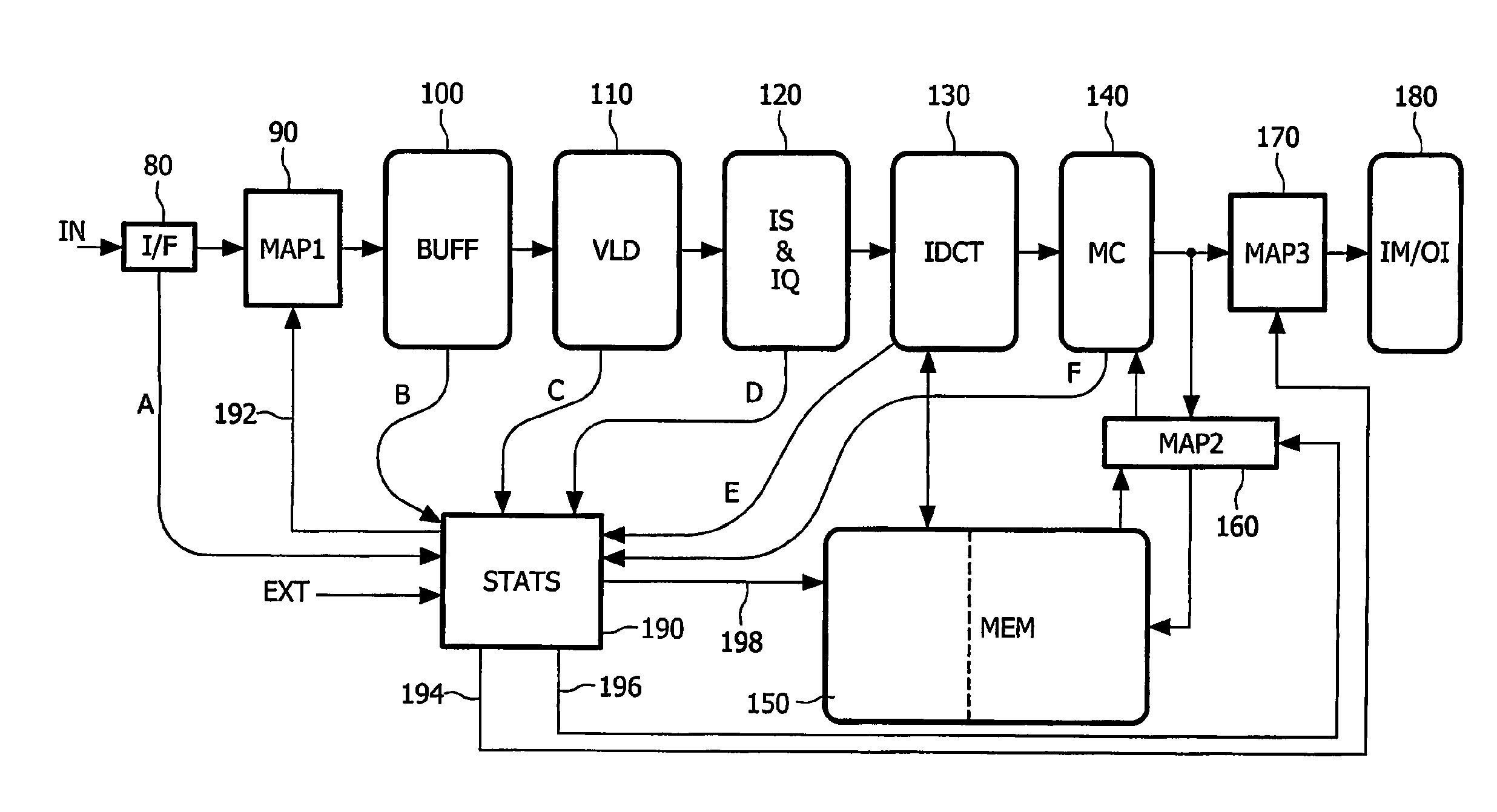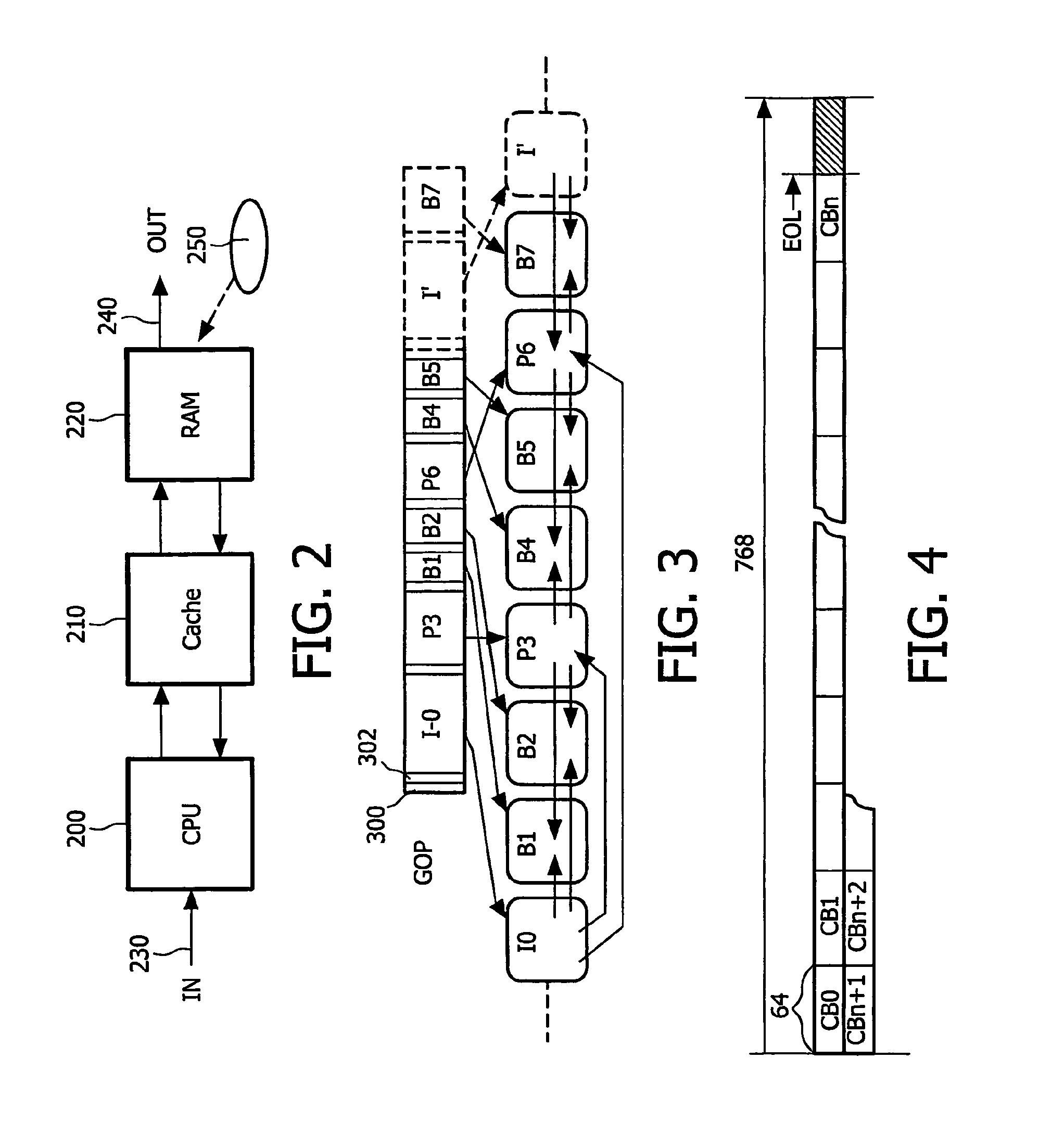Method and apparatus for processing image data
- Summary
- Abstract
- Description
- Claims
- Application Information
AI Technical Summary
Benefits of technology
Problems solved by technology
Method used
Image
Examples
Embodiment Construction
[0083]FIG. 1 illustrates the various modules of an image processor performing MPEG decoding, and the additional features to support image sequence characteristic analysis and dynamic reconfiguration of image buffers and cache control. Further general considerations and detail of the reconfiguration will be described below under separate headings.
[0084]Input data IN, either in the form of analogue video, or a digital stream, is input to interface block I / F. The decoder further comprises configuration block MAP190, buffer BUFF 100, Variable Length Decoder (VLD) 110, Inverse Scan (IS) and Inverse Quantiser (IQ) 120, Inverse Discrete Cosine Transform (IDCT) 130, Motion Compensator (MC) 140, Image Memory MEM 150, configuration block MAP2160, configuration block MAP3170, Image Memory / Output Interface 180 and statistical processor STATS 190. The decoder may be implemented in dedicated hardware, or by a processor as a series of process steps, or a combination of both. The present disclosure...
PUM
 Login to View More
Login to View More Abstract
Description
Claims
Application Information
 Login to View More
Login to View More - R&D
- Intellectual Property
- Life Sciences
- Materials
- Tech Scout
- Unparalleled Data Quality
- Higher Quality Content
- 60% Fewer Hallucinations
Browse by: Latest US Patents, China's latest patents, Technical Efficacy Thesaurus, Application Domain, Technology Topic, Popular Technical Reports.
© 2025 PatSnap. All rights reserved.Legal|Privacy policy|Modern Slavery Act Transparency Statement|Sitemap|About US| Contact US: help@patsnap.com



